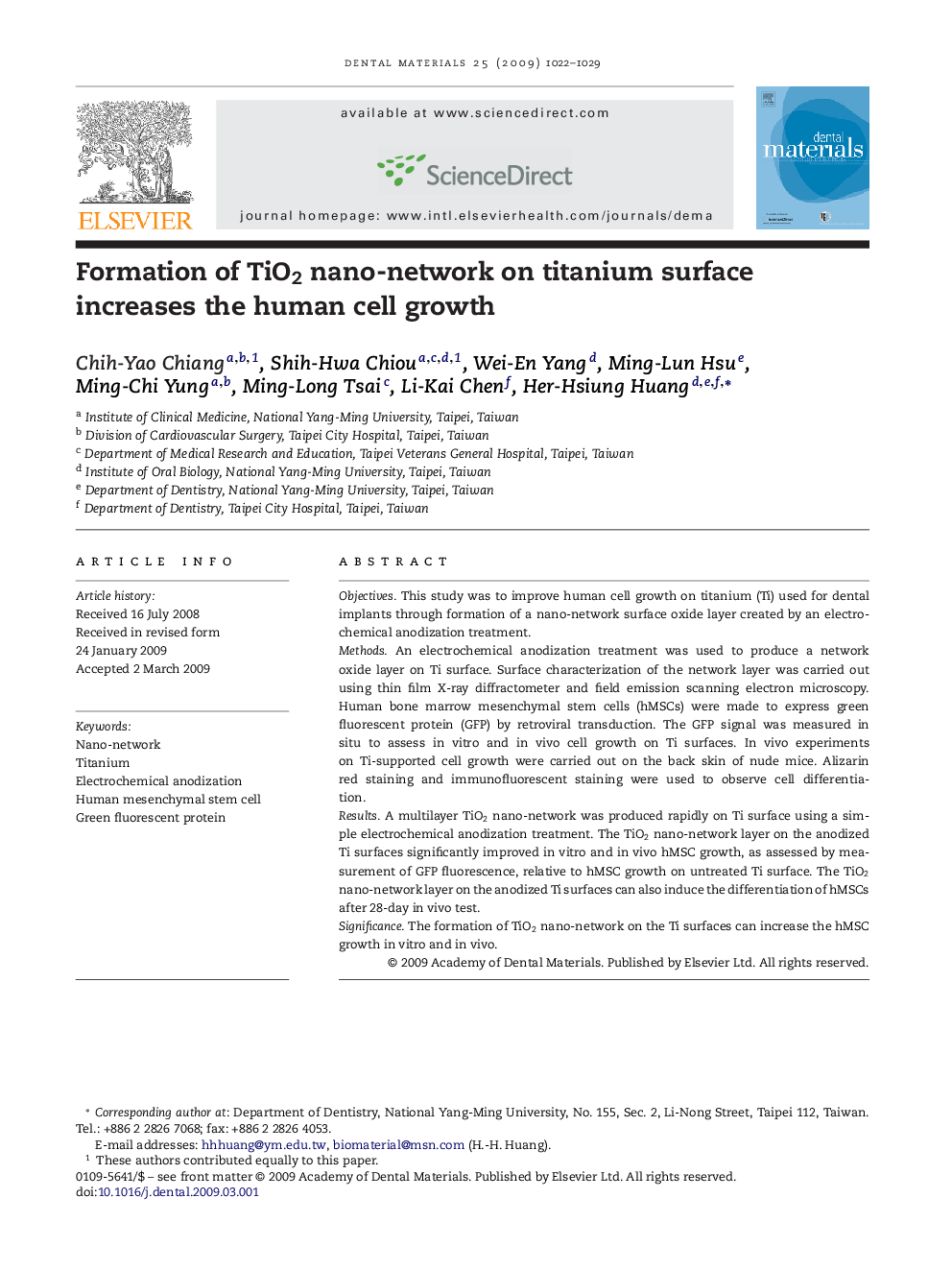| Article ID | Journal | Published Year | Pages | File Type |
|---|---|---|---|---|
| 1423057 | Dental Materials | 2009 | 8 Pages |
ObjectivesThis study was to improve human cell growth on titanium (Ti) used for dental implants through formation of a nano-network surface oxide layer created by an electrochemical anodization treatment.MethodsAn electrochemical anodization treatment was used to produce a network oxide layer on Ti surface. Surface characterization of the network layer was carried out using thin film X-ray diffractometer and field emission scanning electron microscopy. Human bone marrow mesenchymal stem cells (hMSCs) were made to express green fluorescent protein (GFP) by retroviral transduction. The GFP signal was measured in situ to assess in vitro and in vivo cell growth on Ti surfaces. In vivo experiments on Ti-supported cell growth were carried out on the back skin of nude mice. Alizarin red staining and immunofluorescent staining were used to observe cell differentiation.ResultsA multilayer TiO2 nano-network was produced rapidly on Ti surface using a simple electrochemical anodization treatment. The TiO2 nano-network layer on the anodized Ti surfaces significantly improved in vitro and in vivo hMSC growth, as assessed by measurement of GFP fluorescence, relative to hMSC growth on untreated Ti surface. The TiO2 nano-network layer on the anodized Ti surfaces can also induce the differentiation of hMSCs after 28-day in vivo test.SignificanceThe formation of TiO2 nano-network on the Ti surfaces can increase the hMSC growth in vitro and in vivo.
